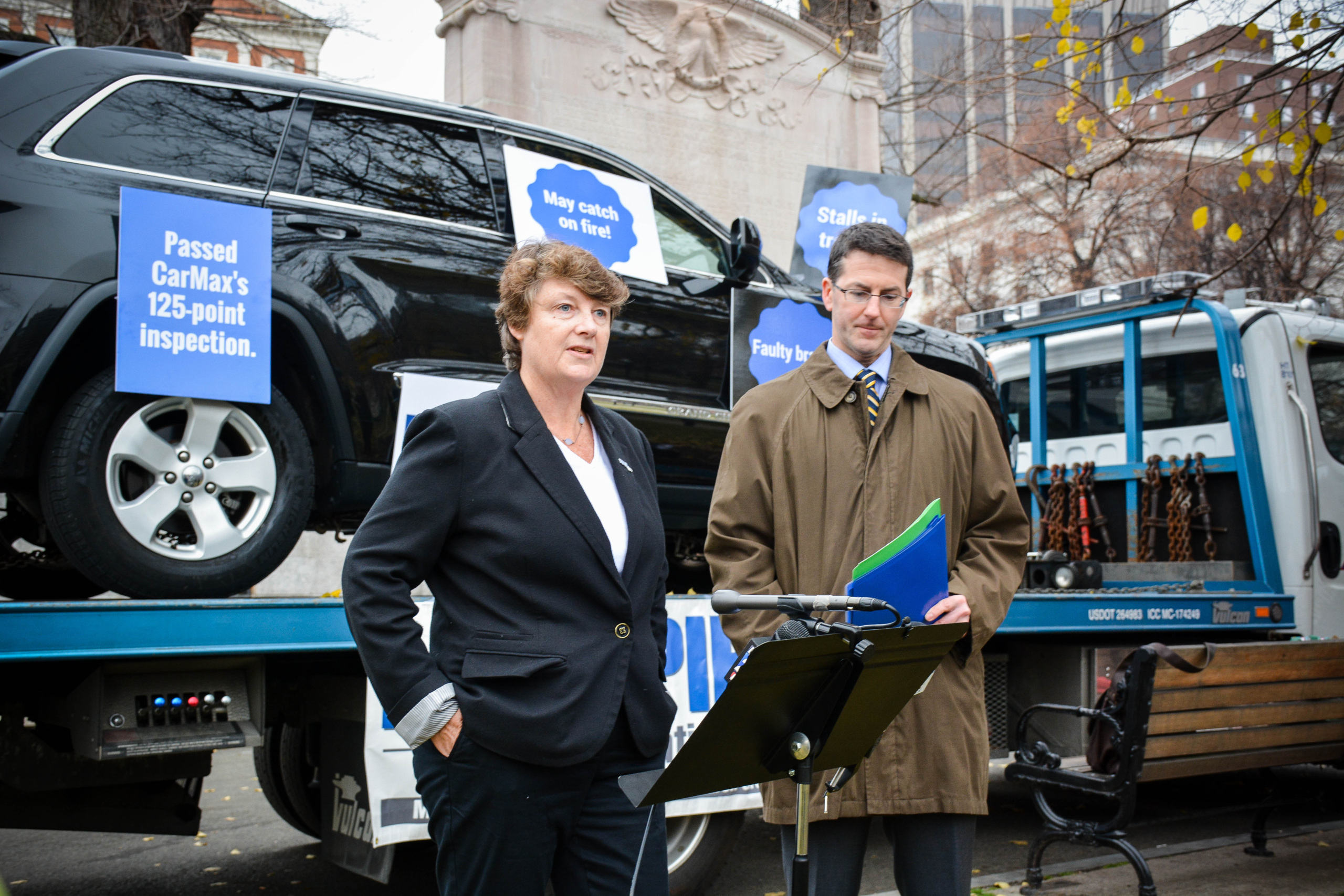
Testimony on Surprise Billing Pay Rates
MASSPIRG joined Health Care For All and Health Law Advocates to provide testimony regarding the establishment of an out-of-network commercial payment rate for both emergency health care services and nonemergency health care services in the Commonwealth, pursuant to Section 71 of Chapter 260 of the Acts of 2020.

Lauren Peters, J.D.
Undersecretary for Health Policy
Executive Office of Health & Human Services
June 30, 2021
Dear Undersecretary Peters,
On behalf of Health Care For All, Health Law Advocates and MASSPIRG, thank you for the opportunity to provide testimony regarding the establishment of an out-of-network commercial payment rate for both emergency health care services and nonemergency health care services in the Commonwealth, pursuant to Section 71 of Chapter 260 of the Acts of 2020.
We are pleased that action has been taken at both at the federal and state levels to address surprise out-of-network billing, which can burden consumers with high bills and medical debt that they had no way of avoiding. We support the provisions passed as part of Chapter 260 and in the federal No Surprises Act requiring advanced disclosure of a provider’s network status, which will decrease the likelihood of a surprise bill in the first place. We also strongly support the language in the federal law that protects consumers from balance billing, as well as high out-of-pocket costs if a consumer inadvertently sees an out-of-network provider. Specifically, the federal law provides that for services relating to emergency medicine, anesthesiology, pathology, radiology, neonatology, diagnostic testing and other identified services, insurers are required to treat those services as in-network for the purposes of patient copayments and deductibles.[1] In addition, if the plan has coinsurance, the patient cost-share will be based on the “qualifying payment amount” which is generally the insurer’s median in-network rate for similar services in that geographic region. We believe that in addition to protecting consumers from balance billing, these out-of-pocket cost protections are critical to ensuring that patients are not unfairly shouldering higher out-of-pocket costs due to surprise bills.
We also continue to believe in the importance of establishing a well-defined process to determine a fair and reasonable reimbursement rate for out-of-network providers, both for emergency and non-emergency services, to protect consumers broadly from rising costs. In determining our recommendations for out-of-network rates, we looked to other states that have implemented surprise billing laws, and we considered what the impact could be on direct consumer costs, system costs and provider contracting/network adequacy. California, for example, established a default rate of 125% of Medicare or the average contracted rate for that service for that region for that health plan.[2] According to a 2019 study[3] from the statewide health care consumer advocacy group, Health Access California, all but a handful of physicians had accepted the “average contracted rate” benchmark as payment in full, rather than appealing for higher payment. The fallback dispute resolution mechanism had also upheld this reimbursement rate in almost all cases. In addition, insurers had broadened their networks, and contracting continued to be widespread, such that 80-100% of their hospitals and other facilities had no out-of-network billing from the physician practices within. While Massachusetts may not want to follow the California model precisely, we wanted to point out that the law appears to be working as intended by protecting consumers from surprise medical bills, while insurers continue widespread contracting with physicians according to state regulators, and insurer data indicates networks have expanded since the law’s implementation. In addition, at the federal level, Congressional Budget Office analysis found that an arbitration model would result in fewer savings than a benchmark.[4]
For those states that have implemented an arbitration process to determine out-of-network rates, such as New York[5] and New Jersey,[6] we have seen data showing that those processes and resulting payment rates are increasing health care spending in those states, and we know that higher system costs mean higher premium increases for employers and consumers. We recognize, however, that those state laws differ from the arbitration language under the federal No Surprises Act, so we don’t think the experiences in those states should solely inform the processes in Massachusetts.
Regarding the federal No Surprises Act, we recognize and appreciate the compromise that was made at the federal level to ensure the approach does not significantly increase costs. In particular, the federal arbitration provisions allow the consideration of the insurer’s median in-network rate for similar services in that geographic, while the arbitrator cannot take into consideration provider charges. These guardrails will help ensure that any final arbitrated rates are not excessively high.
At the same time, we remain concerned that a process that relies on arbitration rather than an established default rate or set of rates could lead to higher overall costs to the system due to the potential for higher arbitrated rates, plus the additional costs of actually implementing an arbitration process. We are also concerned that that the lack of clarity in the federal law regarding how arbitrators should weigh criteria when making decisions could undermine critical cost containment guardrails and result in excessive use of arbitration and higher payments to providers.[7] These increased costs, in turn, could translate to higher premium increases for consumers and employers, while rising premiums already place an enormous burden on individuals, families and businesses. According to data from the Center for Health Information and Analysis, Massachusetts’ consumer costs – co-pays, deductibles and insurance premiums – continue to rise year after year,[8] growing twice as fast as overall health costs in some recent years.[9] While premiums only grew 2.2% in 2019, the previous three years had seen growth rates of 5.8%, 5.6% and 4.8%, and the rates approved for 2021 will result in an average 8% premium increase this year despite lower than expected utilization.[10] These premiums are regularly outpacing the overall cost growth of the system (from 3.1% to 4.8% between 2017 and 2019). They also outpace wage and salary growth (2.8% in 2018) and regional inflation (2.9% in 2018).
These increases are also building on premiums that are already extremely expensive. A 2019 analysis by the Commonwealth Fund found that Massachusetts already had the fifth highest premiums for employer sponsored insurance in the country ($7,443) and the highest employee premium contribution to employer-sponsored insurance for individuals ($1,903).[11] Over the past nearly two decades between 2000 and 2018, the average cost of a family premium in the state nearly tripled, increasing 197%, and employee premium contributions increased even more by 276%, all while general inflation increased only 50% and personal income increased just 86%.[12]
Given these premium trends, we support ensuring that any established default rate, or process to identify a default rate, results in cost savings to system that will ultimately lower premium increases for consumers and employers. Massachusetts can pursue this approach because the federal law allows states to establish an out-of-network commercial payment rate for both emergency health care services and nonemergency health care services, or keep what they had, while also establishing a floor for states who did not want to act or agreed with the arbitration process established in the bill.
If Massachusetts opts to pursue the model of establishing a default out-of-network rate, we believe the following parameters should be applied: 1) the overall impact should result in cost savings to consumers and employers, and therefore not be based on charges, and have minimal additional administrative expenses to both providers and payers; and 2) the rate should ensure that current in-network participation levels by providers are improved upon. This means the rate should not be at such a high level as to incentivize providers to leave a network or discourage providers from joining a network. This also means the rates should not be set at such a low level as to incentivize a health plan to drop providers from their networks, or pay a rate that is so low as to have a detrimental impact on community and other safety-net providers.
Whether the state creates a benchmark system, or allows the existing federal arbitration system to go forward unaltered, it will be critical to monitor the impact on consumer and system costs, access to care, and on provider-carrier contracting and network adequacy. In order to do that effectively, the state, carriers and providers will first need to complete their ongoing work to fully implement a system to ensure accurate provider directories. State regulators should then gather information about each carrier’s provider network to serve as a baseline for future assessments and monitoring of any potential impacts that a benchmark rate might have upon provider networks and consumer access. If an arbitration process or appeals process is adopted, the state should collect detailed information on which providers and insurers are using that process, and for what procedures or services. For either a benchmark or arbitration process, the state should additionally collect information and report on the impact on consumer cost-sharing and premiums. This information will help inform if any amendments to the default rates or rate processes are needed in future years.
Thank you again for the opportunity to submit written comments regarding the establishment of out-of-network commercial payment rates. Please don’t hesitate to contact us with any questions.
Sincerely,
Deirdre Cummings, Legislative Director, MASSPIRG
Alyssa R. Vangeli, Co-Directory, Policy and Government Relations, Health Care For All
Wells Wilkinson, Senior Staff Attorney, Health Law Advocates
[1] Understanding the No Surprises Act, USC-Brookings Schaeffer on Health Policy (February 4, 2021): https://www.brookings.edu/blog/usc-brookings-schaeffer-on-health-policy/2021/02/04/understanding-the-no-surprises-act/
[2] California Assembly Bill No. 72: https://leginfo.legislature.ca.gov/faces/billTextClient.xhtml?bill_id=201520160AB72
[3] Patients Protected, Providers Paid: Data From Three Years of California’s Compromise to Stop Surprise Medical Bills, Health Access California (September 2019): https://health-access.org/wp-content/uploads/2019/09/ha-factsheet-AB72report-final.pdf
[4] Draft CBO Score Of Surprise Billing Options: Benchmark Rates Save Most, Inside Health Policy (June 4, 2019):
[5] Experience with New York’s arbitration process for surprise out-of-network bills, USC-Brookings Schaeffer on Health Policy (October 24, 2019): https://www.brookings.edu/blog/usc-brookings-schaeffer-on-health-policy/2019/10/24/experience-with-new-yorks-arbitration-process-for-surprise-out-of-network-bills/
[6]Arbitration Over Out-Of-Network Medical Bills: Evidence From New Jersey Payment Disputes, Health Affairs (January 2021): https://www.healthaffairs.org/doi/10.1377/hlthaff.2020.00217#:~:text=If%20the%20out%2Dof%2Dnetwork,the%20insurer%20outside%20of%20arbitration
[7] “Equal weighting” is a poor framework for arbitration decisions under the No Surprises Act, USC-Brookings Schaeffer on Health Policy (June 24, 2021): https://www.brookings.edu/blog/usc-brookings-schaeffer-on-health-policy/2021/06/24/equal-weighting-is-a-poor-framework-for-arbitration-decisions-under-the-no-surprises-act/
[8] Performance of the Massachusetts Health Care System Annual Report, Center for Health Information and Analysis (March 2021): https://www.chiamass.gov/assets/2021-annual-report/2021-Annual-Report.pdf
[9] Performance of the Massachusetts Health Care System Annual Report, Center for Health Information and Analysis (October 2019): https://www.chiamass.gov/assets/2019-annual-report/2019-Annual-Report.pdf
[10] Health insurance premiums to rise 8% next year, Commonwealth Magazine (September 15, 2020):
https://commonwealthmagazine.org/health-care/health-insurance-premiums-to-rise-8-next-year/
[11] Trends in Employer Health Care Coverage, 2008–2018: Higher Costs for Workers and Their Families, The Commonwealth Fund (November 21, 2019): https://www.commonwealthfund.org/publications/2019/nov/trends-employer-health-care-coverage-2008-2018
[12] 2019 Annual Health Care Cost Trends Report, Health Policy Commission (February 2020): https://www.mass.gov/doc/2019-health-care-cost-trends-report/download
Topics
Authors
Deirdre Cummings
Legislative Director, MASSPIRG
Deirdre runs MASSPIRG’s public health, consumer protection and tax and budget programs. Deirdre has led campaigns to improve public records law and require all state spending to be transparent and available on an easy-to-use website, close $400 million in corporate tax loopholes, protect the state’s retail sales laws to reduce overcharges and preserve price disclosures, reduce costs of health insurance and prescription drugs, and more. Deirdre also oversees a Consumer Action Center in Weymouth, Mass., which has mediated 17,000 complaints and returned $4 million to Massachusetts consumers since 1989. Deirdre currently resides in Maynard, Mass., with her family. Over the years she has visited all but one of the state's 351 towns — Gosnold.
Find Out More

Protecting the public from unsafe recalled cars

Apple AirPods are designed to die: Here’s what you should know

New report reveals widespread presence of plastic chemicals in our food

